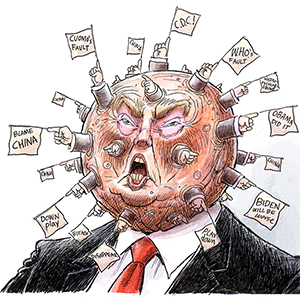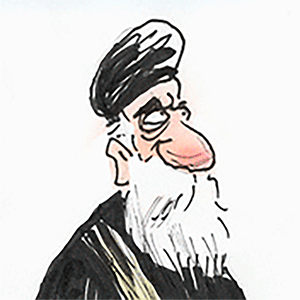California Gov. Gavin Newsom wants a special election on redistricting in November
Published in News & Features
SACRAMENTO, Calif. — Gov. Gavin Newsom wants to ask voters in November to approve a series of new congressional maps to redistrict the state and combat a similar effort in Texas, he said Thursday.
The special election would be held the first Tuesday of November, and the maps would be in effect for the 2026, 2028, and 2030 election cycles, before reverting back to the control of the state Citizen Redistricting Commission.
“We’re reacting to the president of the United States and (Texas Gov.) Greg Abbott trying to rig the election,” Newsom told reporters Thursday during a press conference with Cal Fire at McClellan Park. “They recognize they can’t win in the midterms. All the momentum has shifted away from them.”
In an effort to keep Republicans in control of the U.S. House after the 2026 midterms, President Donald Trump has pressured the Texas Legislature to redraw maps in a way that benefits Republicans. A proposed congressional map unveiled this week could help Republicans win five additional House seats.
Republicans currently hold nine of California’s 52 House seats. A “theoretical map” unveiled by the UCLA Voting Rights Project Thursday could shift the number of competitive or Republican-leaning districts from 16 to 5.
The Republicans hold a seven-seat majority over the House of Representatives, with four vacancies. Newsom said earlier this week that he believed Democrats could overturn the Republicans’ 219-212 majority in the midterms.
In recent weeks Newsom has vocally advocated for the redistricting effort, but state lawmakers have not formally discussed the issue and adjourned July 18 for a monthlong summer recess.
Speaker Robert Rivas said this week he is “working with the governor and exploring every option to protect our democracy and ensure our government remains fair, transparent and representative of the people.”
Senate President pro Tem Mike McGuire has not commented on the proposal.
A citizen commission usually decides districts
In most states, lawmakers draw new political lines after every census to account for population changes, but California is one of 15 states in which decennial redistricting is done via commission.
The 14-member citizen commission was created by voters in 2008 and is made up of five Democrats, five Republicans and four members with no party affiliation.
Newsom said he believed a special election would be doable because other counties already have elections planned for Nov. 4, and therefore would be cheaper than the 2021 recall, which cost more than $200 million.
The governor compared the cost of a special election to an old Mastercard commercial, saying democracy is “priceless.”
He also promised transparency about any proposed political maps.
“This is not going to be done in a back room,” he said. “It’s not going to be done by members of some private group or bodies, so it can be given to the voters for their consideration in a very transparent way.”
“There’s too much at stake,” Newsom said. “I’m not going to sit back any longer in a fetal position, in a position of weakness, when in fact, California could demonstrably advance strength, and that’s what we intend to do to show our strength and capacity of purpose, of conviction, in the spirit of our founding fathers, in the spirit of the best of Roman Republic and Greek democracy, in the spirit of checks and balances, in the spirit of rule and love, the spirit that defines the best of this 249-year enduring experiment.”
Do new maps need voter approval?
Newsom said he wants to call a special election for voters to weigh in, but lawmakers may not need to do that, according to a new memo from UCLA researchers.
The paper from the UCLA Voting Rights Project said that while the state Constitution explicitly requires the state’s redistricting commission to draw new maps after every decennial census, it does not take away the Legislature’s authority to conduct reapportionment as well.
“While the California Citizens Redistricting Commission has the legal responsibility to draw districts once every 10 years following the Census, the California State Legislature has the legal constitutional authority to draw new districts today,” the memo argues.
It notes that Article IV of the state Constitution “expressly recognize(s) the power of the Legislature to enact ‘a statute establishing or changing boundaries of any legislative, congressional, or other election district.’”
The memo also addresses a 1983 ruling by the California Supreme Court, which blocked the then-Republican-led Legislature from adopting new maps mid-decade.
The ruling might serve as a legal hurdle for the current Democratic-controlled Legislature to do the same.
But the UCLA memo argues that when voters approved two ballot propositions in 2008 and 2010 that led to today’s redistricting commission, certain constraints — including the once-per-decade rule — now apply only to the commission.
“The proposition … did not include clear constitutional text that banned the Legislature from engaging in redistricting or prohibited the Legislature from doing so at certain times,” the memo reads.
It concludes that the constitutional “requirements and limitations” surrounding redistricting “now apply only to the Citizen Redistricting Commission.”
_____
©2025 The Sacramento Bee. Visit sacbee.com. Distributed by Tribune Content Agency, LLC.







Comments